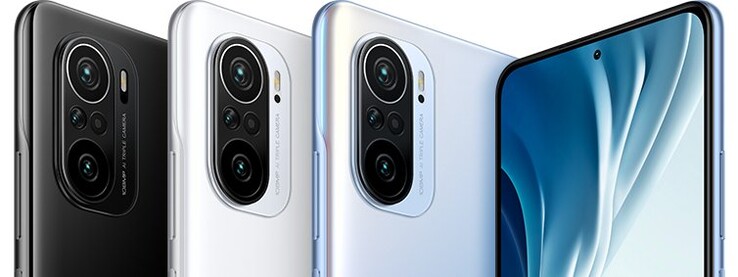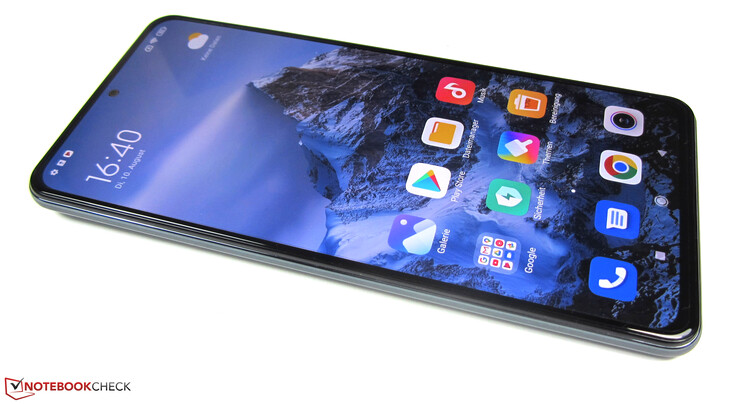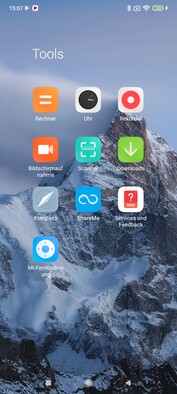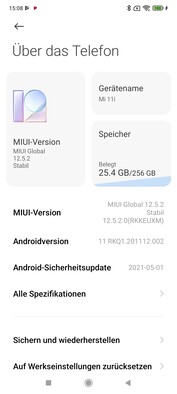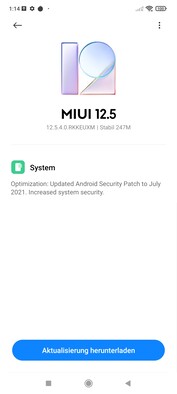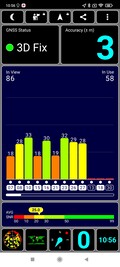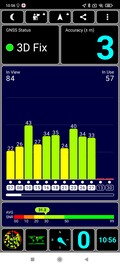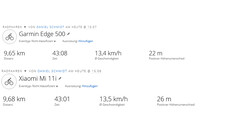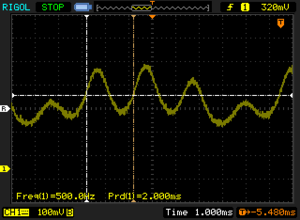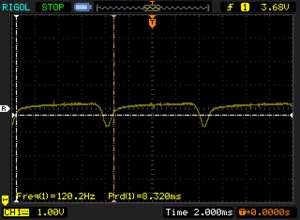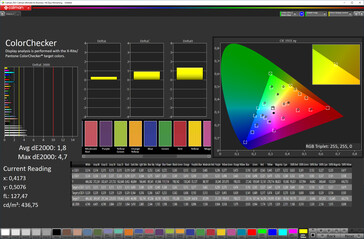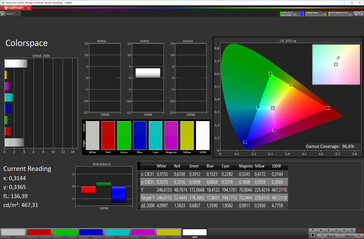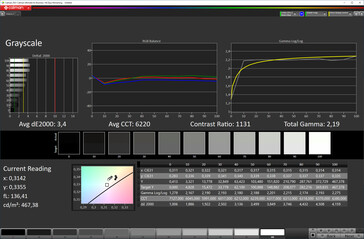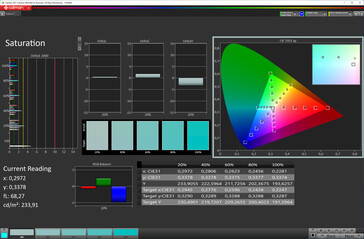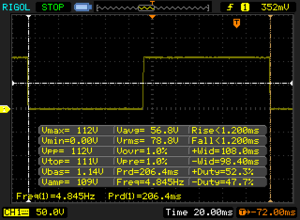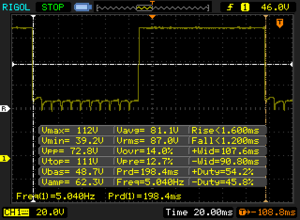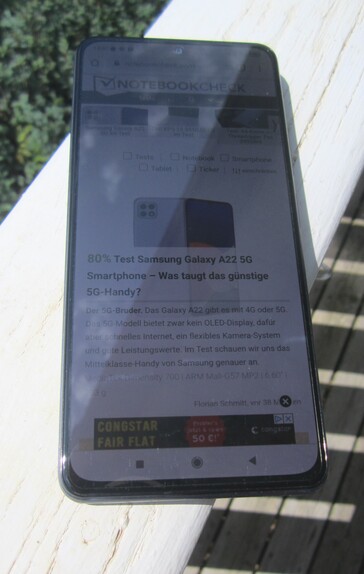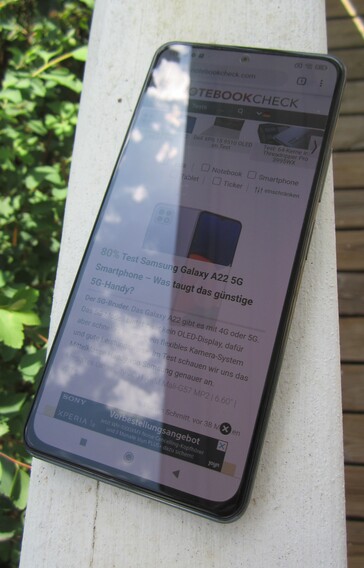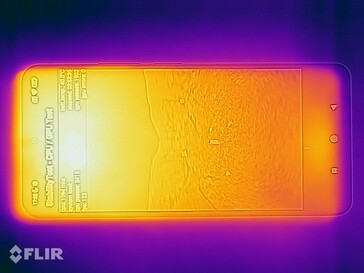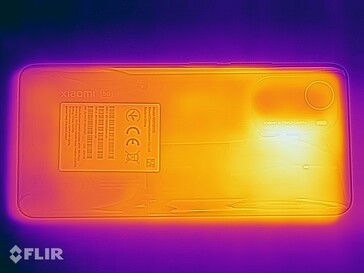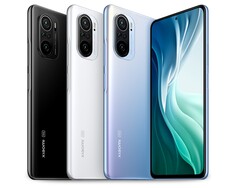Xiaomi Mi 11i smartphone review: One of the most affordable high-end smartphones with the Snapdragon 888
Xiaomi's current top smartphones can be found in the Mi 11 series. It consists of five devices now: The Mi 11 Ultra, Mi 11, Mi 11i, Mi 11 Lite 5G, and the Mi 11 Lite. In this review, we'll take a closer look at the latest addition, the Xiaomi Mi 11i. This is the name under which Xiaomi offers the Redmi K40 Pro+ on the European market.
While the Mi 11 Ultra and the Mi 11 are the flagship devices of the Mi 11 series, the Mi 11 Lite 5G and Mi 11 Lite models aren't quite as powerful or extensively equipped, but they're the cheapest in return. Our Mi 11i test model ranks above the Mi 11 Lite 5G. In terms of performance, it has nothing in common with the entry-level models since its performance is on par with the Mi 11.
Just like the Mi 11, the Mi 11i is also equipped with the fast Snapdragon 888 and is supported by 8 GB of LPDDR5 RAM. However, at 6.67-inches, the Mi 11i is slightly smaller than the 6.81-inch top models, and its OLED display's resolution of 2400x1080 pixels is not quite as high (Mi 11 and Mi 11 Ultra: 3200x1440 pixels). In return, it also manages 120 Hz like all the non-Lite models. There's also a 108-megapixel sensor from Samsung and a 4,520 mAh battery.
The Mi 11i currently costs 599 Euros (~$704) in the Xiaomi store and consequently 100 Euros (~$117) less than the Mi 11, which is priced at 699 Euros (~$821). So, why spend more money when the Mi 11 only differs from the Mi 11i in minor details? Moreover, it could even be the best Mi 11 smartphone from a price-performance ratio perspective. Our review will clarify whether that is the case.
Possible contenders in comparison
Rating | Date | Model | Weight | Drive | Size | Resolution | Best Price |
|---|---|---|---|---|---|---|---|
| 86.6 % | 08/2021 | Xiaomi Mi 11i SD 888 5G, Adreno 660 | 196 g | 256 GB UFS 3.1 Flash | 6.67" | 2400x1080 | |
| 85.9 % | 06/2021 | Asus ZenFone 8 SD 888 5G, Adreno 660 | 169 g | 256 GB UFS 3.1 Flash | 5.92" | 2400x1080 | |
| 87.2 % | 04/2021 | OnePlus 9 SD 888 5G, Adreno 660 | 192 g | 256 GB UFS 3.1 Flash | 6.55" | 2400x1080 | |
| 85.9 % | 07/2021 | Realme GT 5G SD 888 5G, Adreno 660 | 186 g | 128 GB UFS 3.1 Flash | 6.43" | 2400x1080 | |
| 86 % | 05/2021 | Xiaomi Poco F3 SD 870, Adreno 650 | 196 g | 128 GB UFS 3.1 Flash | 6.67" | 2400x1080 | |
| 87.3 % | 02/2021 | Xiaomi Mi 11 SD 888 5G, Adreno 660 | 196 g | 128 GB UFS 3.1 Flash | 6.81" | 3200x1440 |
Case - Xiaomi smartphone with Gorilla Glass 5
In terms of design, the Xiaomi Mi 11i only differs from its counterparts in details. The Mi 11i also stands out with its good build quality. The physical buttons only have a slight play in the chassis, they feel just as high-quality as the case, and they have a good pressure point. The Mi 11i is a tiny bit shorter than the Mi 11 (163.7 versus 164.3 mm/~64.5 inches versus ~64.7 in), but it's just as light at 198 grams (~7 oz), and it's also 8 millimeters thin (~0.3 in).
The Mi 11i's display is protected by a layer of Gorilla Glass 5. Starting with the Mi 11, Xiaomi uses Gorilla Glass 7, also known as "Victus". Interestingly, the Mi 11 Lite 5G offers a bit more here as well, since it relies on Gorilla Glass 6. The 108 MP camera module placed on the very fingerprint-prone back cover is an eye-catcher. It's always black regardless of the case color, and it can be touched easily since it protrudes a few millimeters from the chassis. The main camera is surrounded by a silver ring.
Xiaomi offers the Mi 11i in three colors: "Cosmic Black" graces our review sample. Other colors are "Celestial Silver" and "Frosty White". The Mi 11i doesn't have an official IP certification, but neither does the Mi 11.
Connectivity - Up to 256 GB of storage, but no microSD slot
The Mi 11i comes with 8 GB of LPDDR5 RAM and 128 GB of UFS 3.1 storage in its base configuration, and it costs 599 Euros (~$704) in Xiaomi's web store. The second version with 256 GB of storage costs 699 Euros (~$821). Due to the lack of a microSD slot, the storage can't be expanded.
The Mi 11i has an OLED panel with an always-on functionality, but the fingerprint sensor isn't placed in the display like in the Mi 11, instead it's integrated into the power button. The USB-C port only runs at USB 2.0 speeds, but it supports USB OTG for connecting peripherals.
Additional features are dual speakers with Dolby Atmos, as well as Wi-Fi Direct and Miracast to mirror image content wirelessly. The Mi 11i also supports DRM Widevine L1 and can therefore also stream content in HD quality.
Software - Android 11 and MIUI 12 for the Xiaomi phone
The Mi 11i runs the Android 11 operating system, and at the time of testing (mid-August), its Android security patches are at the level of July 2021. As with Xiaomi's current smartphone lineup, MIUI 12.5 serves as the user interface.
Besides the Google apps and the manufacturer's in-house Samsung tool, Xiaomi has also included eight third-party apps in the ROM. Among them are Amazon, Facebook, and TikTok, for example. Users who don't need the additional software can easily delete all of it. Around 230 GB of the 256 GB in our test device are free after a fresh setup.
Communication and GNSS - Fast WLAN and accurate GPS
When it comes to WLAN connectivity, the MI 11i is quite fast thanks to Wi-Fi 6 and 2x2 MIMO technology. Connected to our reference router, the Netgear Nighthawk AX12, the smartphone also delivers a very convincing performance in practice. In contrast to the Mi 11, the Mi 11i achieves extremely stable transfer rates both for sending and receiving data, if you ignore the small drop when transmitting. At the same time, it's more than twice as fast as the Mi 11 with a peak rate of 1,165 Mb/s for sending data, and it's only just beaten by the Asus ZenFone 8. The Mi 11i's data reception of 792 Mb/s isn't that fast, but the distance to the Mi 11 is only marginal.
5G with the X60 modem, dual SIM, Bluetooth 5.2, and NFC - the Mi 11i doesn't differ from the Mi 11 when it comes to the remaining communication features. The only difference is that the Mi 11i isn't quite as comprehensive in terms of radio frequencies, but it covers all the important frequencies in Germany with 15 LTE bands and 11 5G bands.
| Networking | |
| iperf3 transmit AX12 | |
| Asus ZenFone 8 | |
| Xiaomi Mi 11i | |
| Realme GT 5G | |
| Xiaomi Poco F3 | |
| OnePlus 9 | |
| Xiaomi Mi 11 | |
| iperf3 receive AX12 | |
| Asus ZenFone 8 | |
| Xiaomi Mi 11 | |
| Realme GT 5G | |
| Xiaomi Mi 11i | |
| OnePlus 9 | |
| Xiaomi Poco F3 | |
| Average of class Smartphone (last 2 years) | |
The Mi 11i makes use of a whole armada of satellite navigation systems to determine its position: GPS (L1, L5), GLONASS (L1), Galileo (E1, E5a), BeiDou (B1, B1C, B2a) as well as the Japanese QZSS (L1, L5), and the Indian NavIC (L5). Both outdoors and indoors, the smartphone is able to determine our location quite quickly and with an accuracy of up to three meters (~10 feet).
The accuracy also remains high when we're on the move. On an approximately ten-kilometer (~16 mi) bike ride, the Mi 11i actually tracks our route a bit more accurately than the Garmin Edge 500 professional navigation device, which is taken along for direct comparison.
Telephone and call quality - With VoLTE and VoWiFi
The Mi 11i offers a good call quality that wasn't affected by drops or other connection problems during our test. Users participating in the call can also understand each other well in hands-free mode. In addition, VoLTE and Wi-Fi calls are supported.
Cameras - Weaker triple camera than in the Mi 11
The Mi 11i's camera setup consists of a 108 MP main camera with an f/1.75 aperture, but unlike the Mi 11 that has the same high resolution, it doesn't offer any optical image stabilization. Instead of the Samsung HM3 sensor found in the Mi 11 and Mi 11 Ultra, the Mi 11i uses the less powerful Samsung HM2. In addition to the 108 MP camera, there's an ultra wide-angle camera with 8 MP, an f/2.2 aperture, and a 119° field of view, as well as a 5 MP telephoto macro camera. Like in the Mi 11, there's a 20 MP front-facing camera in the front that takes good selfies.
In the default setting, the Mi 11i takes 12 MP photos using 9-in-1 pixel-binning, and they look really good in favorable lighting conditions. However, the full 108 MP can also be used for taking pictures in the Pro mode. Compared with the Mi 11, however, photos lack a bit of image details and dynamics. Due to the lack of a zoom lens, objects that are far away aren't captured with much sharpness.
Low-light pictures still look quite good when Night mode is enabled. The ultra wide-angle camera, on the other hand, is just average. Although it offers a passable image quality, it struggles with blurriness in the edges. The main camera can record videos at a maximum resolution of 8K at 30 frames per second, which results in a good image quality. HDR videos are also supported.
Image Comparison
Choose a scene and navigate within the first image. One click changes the position on touchscreens. One click on the zoomed-in image opens the original in a new window. The first image shows the scaled photograph of the test device.
Daylight - Scene 1Daylight - Scene 2Ultra wide-angle5x zoomLow-light photoWe take a closer look at the camera again under controlled lighting conditions. This is done under full studio lighting and then with an illumination of 1 lux.
The Mi 11i reproduces colors quite well, and even in low ambient light, the camera software is able to ensure that the deviations from the reference colors aren't too large. However, the smartphone doesn't manage to capture the test chart particularly sharply, even with the studio's full illumination.
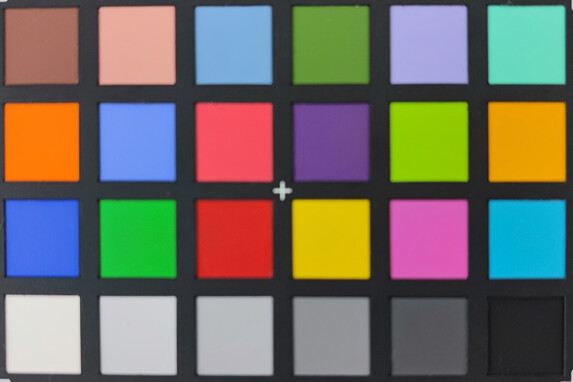

Accessories and warranty - 33-watt charger in the box
In addition to the smartphone, the Mi 11i's package also includes a USB cable (Type-C to Type-A), a 33-watt charger, a headphone adapter (Type-C to 3.5 mm), a SIM tool, a transparent protective case, as well as a quick-start guide and a warranty card.
The Mi 11i comes with a 12-month warranty.
Input devices and handling - 360 Hz touch sampling rate in the Mi 11i
You expect a completely smooth operation from a smartphone with the Snapdragon 888 SoC. And that's exactly what you get with the Mi 11i. Thanks to its SoC power, but also to its refresh rate of 120 Hz and touch sampling rate of 360 Hz, the smartphone handles every input instantly and can be used very smoothly in everyday use. It's easy to overlook the fact that the Mi 11's display sampling rate is 480 Hz, because you'll hardly notice a real difference.
The Mi 11i can be unlocked biometrically using a fingerprint or facial recognition. The fingerprint sensor is located in the power button, and it scores points not only due to its very high recognition rate but mostly also due to its speed: Once you put your finger on it, the smartphone is unlocked almost instantly. The face recognition feature using the front-facing camera also works reliably, but it's less secure than fingerprint authentication.
Display - AMOLED panel with 1,200 cd/m²
The Mi 11i's 6.67-inch AMOLED panel has a resolution of 2400x1080 pixels, which isn't quite as sharp as the 6.81-inch Mi 11 that offers 3200x1440 pixels. However, both panels are on par in terms of brightness. This is also true for the refresh rate, which can be set to 60 or 120 Hz in the display settings.
With a pure white background, we measure an average brightness of almost 880 cd/m² in the Mi 11i. With evenly distributed bright and dark image areas (APL50), the brightness even reaches a respectable 1,201 cd/m². Those are optimal conditions for displaying HDR content - the Mi 11 supports HDR10+. The Mi 11i still manages a maximum of 484 cd/m² when the brightness sensor is turned off. At the lowest brightness level, we measure 2.73 cd/m².
Xiaomi uses pulse width modulation (PWM) for brightness control, ranging from 162.6 to 500 Hz. When the display brightness is 62% or higher, PWM flickering remains constant at 120 Hz.
| |||||||||||||||||||||||||
Brightness Distribution: 96 %
Center on Battery: 875 cd/m²
Contrast: ∞:1 (Black: 0 cd/m²)
ΔE Color 1.8 | 0.5-29.43 Ø5
ΔE Greyscale 3.4 | 0.57-98 Ø5.3
96.6% sRGB (Calman 2D)
Gamma: 2.19
| Xiaomi Mi 11i AMOLED, 2400x1080, 6.67 | Asus ZenFone 8 AMOLED, 2400x1080, 5.92 | OnePlus 9 AMOLED, 2400x1080, 6.55 | Realme GT 5G Super AMOLED, 2400x1080, 6.43 | Xiaomi Poco F3 AMOLED, 2400x1080, 6.67 | Xiaomi Mi 11 LED DotDisplay, 3200x1440, 6.81 | |
|---|---|---|---|---|---|---|
| Screen | -13% | 30% | 11% | 29% | 19% | |
| Brightness middle | 875 | 758 -13% | 731 -16% | 605 -31% | 889 2% | 840 -4% |
| Brightness | 879 | 759 -14% | 739 -16% | 606 -31% | 902 3% | 845 -4% |
| Brightness Distribution | 96 | 98 2% | 96 0% | 97 1% | 95 -1% | 98 2% |
| Black Level * | ||||||
| Colorchecker dE 2000 * | 1.8 | 3.5 -94% | 0.59 67% | 1.3 28% | 0.9 50% | 1.2 33% |
| Colorchecker dE 2000 max. * | 4.7 | 1.3 72% | 3.1 34% | 1.9 60% | 2.7 43% | |
| Greyscale dE 2000 * | 3.4 | 1.6 53% | 0.9 74% | 1.3 62% | 1.3 62% | 2 41% |
| Gamma | 2.19 100% | 2.23 99% | 2.243 98% | 2.25 98% | 2.26 97% | 2.26 97% |
| CCT | 6220 105% | 6527 100% | 6573 99% | 6372 102% | 6614 98% | 6492 100% |
* ... smaller is better
Screen Flickering / PWM (Pulse-Width Modulation)
| Screen flickering / PWM detected | 500 Hz | ≤ 64 % brightness setting | |
The display backlight flickers at 500 Hz (worst case, e.g., utilizing PWM) Flickering detected at a brightness setting of 64 % and below. There should be no flickering or PWM above this brightness setting. The frequency of 500 Hz is relatively high, so most users sensitive to PWM should not notice any flickering. However, there are reports that some users are still sensitive to PWM at 500 Hz and above, so be aware. In comparison: 53 % of all tested devices do not use PWM to dim the display. If PWM was detected, an average of 17900 (minimum: 5 - maximum: 3846000) Hz was measured. | |||
The spectrophotometer and the CalMAN software reveal that the Mi 11i isn't only able to score points in terms of display brightness, but that it also manages a very balanced color reproduction. This is most accurate when using the color profile "Original Color". In the sRGB color space, the DeltaE deviations for colors (DeltaE 1.8) and grayscales (DeltaE 3.4) are so low that the naked eye won't be able to spot any differences compared to the reference colors. Both the color temperature and the RGB balance are good as well, since no color tint can be detected on the display.
Display Response Times
| ↔ Response Time Black to White | ||
|---|---|---|
| 2.4 ms ... rise ↗ and fall ↘ combined | ↗ 1.2 ms rise | |
| ↘ 1.2 ms fall | ||
| The screen shows very fast response rates in our tests and should be very well suited for fast-paced gaming. In comparison, all tested devices range from 0.1 (minimum) to 240 (maximum) ms. » 7 % of all devices are better. This means that the measured response time is better than the average of all tested devices (21.5 ms). | ||
| ↔ Response Time 50% Grey to 80% Grey | ||
| 2.8 ms ... rise ↗ and fall ↘ combined | ↗ 1.6 ms rise | |
| ↘ 1.2 ms fall | ||
| The screen shows very fast response rates in our tests and should be very well suited for fast-paced gaming. In comparison, all tested devices range from 0.2 (minimum) to 636 (maximum) ms. » 7 % of all devices are better. This means that the measured response time is better than the average of all tested devices (33.7 ms). | ||
Performance - Xiaomi smartphone with Snapdragon 888
Like the two Mi 11 top models, the Mi 11 and Mi 11 Ultra, the Mi 11i also comes with Qualcomm's high-end Snapdragon 888 chipset. The octa-core SoC that is supported by the Adreno 660 graphics chip is currently one of the fastest smartphone CPUs, and it also delivers the corresponding benchmark results in the test.
However, as it was already the case with the Mi 11, it's not always easy to access the full potential of the Qualcomm SoC in the Mi 11i, because it quickly starts throttling during prolonged load in order to protect itself from overheating. In everyday use, though, you don't notice anything of what's happening internally with the temperatures, because there's still more than enough power despite the lower clock rates.
If you give the Snapdragon 888 enough time to cool down between the individual benchmarks, you'll be rewarded with top performance. As a result, the Mi 11i is on par with high-end rivals like the Asus ZenFone 8 or the realme GT 5G, which also use the Snapdragon 888, in the synthetic tests. Although the gap to the Xiaomi Poco F3 with its Snapdragon 870 is measurable, it's hardly noticeable in practice. The Mi 11i is even consistently ahead in the browser benchmarks, which is probably due to the newer browser version.
| GFXBench 3.1 | |
| on screen Manhattan ES 3.1 Onscreen (sort by value) | |
| Xiaomi Mi 11i | |
| Asus ZenFone 8 | |
| OnePlus 9 | |
| Realme GT 5G | |
| Xiaomi Poco F3 | |
| Xiaomi Mi 11 | |
| Average Qualcomm Snapdragon 888 5G (36 - 105, n=20) | |
| Average of class Smartphone (3.7 - 158, n=185, last 2 years) | |
| 1920x1080 Manhattan ES 3.1 Offscreen (sort by value) | |
| Xiaomi Mi 11i | |
| Asus ZenFone 8 | |
| OnePlus 9 | |
| Realme GT 5G | |
| Xiaomi Poco F3 | |
| Xiaomi Mi 11 | |
| Average Qualcomm Snapdragon 888 5G (69 - 126, n=20) | |
| Average of class Smartphone (6.2 - 279, n=185, last 2 years) | |
| AnTuTu v8 - Total Score (sort by value) | |
| Xiaomi Mi 11i | |
| OnePlus 9 | |
| Xiaomi Poco F3 | |
| Xiaomi Mi 11 | |
| Average Qualcomm Snapdragon 888 5G (569595 - 740847, n=12) | |
| Jetstream 2 - Total Score | |
| Xiaomi Mi 11i (Chrome 92.0.4515.115) | |
| Average of class Smartphone (13.8 - 351, n=173, last 2 years) | |
| Average Qualcomm Snapdragon 888 5G (61.3 - 125.1, n=13) | |
| Xiaomi Mi 11 (Chrome 88) | |
| Xiaomi Poco F3 (Chrome 90) | |
| OnePlus 9 (MS Edge) | |
| JetStream 1.1 - Total Score | |
| Xiaomi Mi 11i (Chrome 92.0.4515.115) | |
| Asus ZenFone 8 (Chrome 90) | |
| Average Qualcomm Snapdragon 888 5G (77 - 223, n=19) | |
| Xiaomi Mi 11 (Chrome 88) | |
| OnePlus 9 (MS Edge) | |
| Realme GT 5G (Chrome 91) | |
| Xiaomi Poco F3 (Chrome 90) | |
| Average of class Smartphone (last 2 years) | |
| Speedometer 2.0 - Result | |
| Xiaomi Mi 11i (Chrome 92.0.4515.115) | |
| Average of class Smartphone (14.9 - 445, n=157, last 2 years) | |
| Average Qualcomm Snapdragon 888 5G (46.9 - 121, n=12) | |
| Xiaomi Poco F3 (Chrome 90) | |
| Xiaomi Mi 11 (Chrome 88) | |
| OnePlus 9 (MS Edge) | |
| WebXPRT 3 - Overall | |
| Xiaomi Mi 11i (Chrome 92.0.4515.115) | |
| Asus ZenFone 8 (Chrome 90) | |
| Average Qualcomm Snapdragon 888 5G (103 - 182, n=18) | |
| Average of class Smartphone (39 - 304, n=122, last 2 years) | |
| Xiaomi Poco F3 (Chrome 90) | |
| Xiaomi Mi 11 (Chrome 88) | |
| OnePlus 9 (MS Edge) | |
| Realme GT 5G (Chrome 91) | |
| Octane V2 - Total Score | |
| Xiaomi Mi 11i (Chrome 92.0.4515.115) | |
| Asus ZenFone 8 (Chrome 90) | |
| Average Qualcomm Snapdragon 888 5G (23491 - 47543, n=20) | |
| Average of class Smartphone (4633 - 89112, n=213, last 2 years) | |
| Xiaomi Mi 11 (Chrome 88) | |
| Xiaomi Poco F3 (Chrome 90) | |
| OnePlus 9 (Chrome89) | |
| Realme GT 5G (Chrome 91) | |
| Mozilla Kraken 1.1 - Total | |
| Realme GT 5G (Chrome 91) | |
| Xiaomi Poco F3 (Chrome 90) | |
| Xiaomi Mi 11 (Chrome 88) | |
| OnePlus 9 (Chrome89) | |
| Average of class Smartphone (388 - 9999, n=173, last 2 years) | |
| Asus ZenFone 8 (Chrome 90) | |
| Average Qualcomm Snapdragon 888 5G (891 - 1841, n=20) | |
| Xiaomi Mi 11i (Chrome 92.0.4515.115) | |
* ... smaller is better
Equipped with fast UFS 3.1 storage, the Mi 11i performs decently in the read and write benchmarks, but it still doesn't quite reach its competitors' performance. Although the read performance is very good, the write performance and the 4 KB random reads/writes don't come close to the Mi 11's performance, even after repeated runs of Androbench. That said, the system performance still remains top-notch.
| Xiaomi Mi 11i | Asus ZenFone 8 | OnePlus 9 | Realme GT 5G | Xiaomi Poco F3 | Xiaomi Mi 11 | Average 256 GB UFS 3.1 Flash | Average of class Smartphone | |
|---|---|---|---|---|---|---|---|---|
| AndroBench 3-5 | 36% | 21% | 3% | 2% | 33% | 55% | 41% | |
| Sequential Read 256KB | 1628 | 1781 9% | 1872 15% | 1587 -3% | 1378 -15% | 1615 -1% | 1760 ? 8% | 1508 ? -7% |
| Sequential Write 256KB | 552 | 767 39% | 739 34% | 575 4% | 684 24% | 754 37% | 1134 ? 105% | 1118 ? 103% |
| Random Read 4KB | 181 | 292.3 61% | 225.4 25% | 198.7 10% | 208 15% | 278.5 54% | 281 ? 55% | 247 ? 36% |
| Random Write 4KB | 205.9 | 272.9 33% | 221.4 8% | 208.4 1% | 170.6 -17% | 289.3 41% | 311 ? 51% | 272 ? 32% |
Games - Adreno 660 provides smooth gaming
Needless to say, games run smoothly on the Mi 11i. However, our small selection from the Play Store also shows that the smartphone isn't always able to make use of its 120 Hz display. Only 30 frames per second are possible in PUBG Mobile (in the HD setting) and Armajet, but the frame rates only drop below this value very rarely. Overall, the Mi 11i seems to limit the frame rates more than the Mi 11, which manages up to 60 fps in PUBG Mobile as well as in other games.
Nevertheless, gamers are still very well served with the Mi 11i, which isn't only due to its high-end Adreno 660 GPU. The touch sampling rate of 360 Hz also contributes to the fun, while the two Dolby Atmos speakers on the sides provide a good sound.
We measure the game frame rates with the Gamebench tool.
Emissions - Xiaomi Mi 11i with throttling
Temperature
The Mi 11i's surface heats up to 40.1 °C (~104 °F) during use, but only when you subject it to a stress test for an hour like we did. However, it doesn't feel uncomfortable to the touch even then. In practice, the surface temperatures should usually be lower, but they can certainly be reached during longer gaming sessions.
We can't provide exact information on the temperature behavior of the Snapdragon 888, because the Mi 11i turned out to be uncooperative here. The 3DMark Wild Life Stress Test ends abruptly with the notification that the smartphone is overheated. The battery tests from GFXBench look better at first. The T-Rex and Manhattan test scenarios run smoothly, but GFXBench crashes without notice immediately before the results are displayed.
(+) The maximum temperature on the upper side is 39.5 °C / 103 F, compared to the average of 35 °C / 95 F, ranging from 21.9 to 56 °C for the class Smartphone.
(±) The bottom heats up to a maximum of 40.1 °C / 104 F, compared to the average of 33.8 °C / 93 F
(+) In idle usage, the average temperature for the upper side is 28.9 °C / 84 F, compared to the device average of 32.7 °C / 91 F.
Speakers
Just like in the Mi 11, the stereo speakers of the Mi 11i are located at the top and bottom. In contrast to the sibling model, though, they're not tuned by Harman Kardon, but they support Dolby Atmos and deliver a sound that's similar in quality to that of the Mi 11. Although there's hardly any bass, the mids and highs are very linear in return.
The Mi 11i doesn't have an audio jack. However, headsets and external speakers can be plugged into the smartphone's USB-C port using the included 3.5 mm adapter. Wirelessly, connections are possible via Bluetooth 5.2.
Xiaomi Mi 11i audio analysis
(+) | speakers can play relatively loud (87.5 dB)
Bass 100 - 315 Hz
(-) | nearly no bass - on average 25.9% lower than median
(±) | linearity of bass is average (12.9% delta to prev. frequency)
Mids 400 - 2000 Hz
(±) | higher mids - on average 5.2% higher than median
(+) | mids are linear (4.8% delta to prev. frequency)
Highs 2 - 16 kHz
(+) | balanced highs - only 4.1% away from median
(+) | highs are linear (4% delta to prev. frequency)
Overall 100 - 16.000 Hz
(±) | linearity of overall sound is average (18% difference to median)
Compared to same class
» 11% of all tested devices in this class were better, 7% similar, 82% worse
» The best had a delta of 12%, average was 38%, worst was 134%
Compared to all devices tested
» 32% of all tested devices were better, 8% similar, 60% worse
» The best had a delta of 4%, average was 25%, worst was 134%
Xiaomi Mi 11 audio analysis
(+) | speakers can play relatively loud (86.8 dB)
Bass 100 - 315 Hz
(-) | nearly no bass - on average 26% lower than median
(±) | linearity of bass is average (9.5% delta to prev. frequency)
Mids 400 - 2000 Hz
(+) | balanced mids - only 4.5% away from median
(+) | mids are linear (5.3% delta to prev. frequency)
Highs 2 - 16 kHz
(+) | balanced highs - only 4.5% away from median
(+) | highs are linear (2.3% delta to prev. frequency)
Overall 100 - 16.000 Hz
(±) | linearity of overall sound is average (17.8% difference to median)
Compared to same class
» 10% of all tested devices in this class were better, 7% similar, 83% worse
» The best had a delta of 12%, average was 38%, worst was 134%
Compared to all devices tested
» 31% of all tested devices were better, 8% similar, 61% worse
» The best had a delta of 4%, average was 25%, worst was 134%
Battery life - Fully recharged in less than an hour
Energy consumption
The Mi 11i isn't very power hungry and runs a bit more energy-efficiently than the Mi 11, which might be due to the latter's higher-resolution AMOLED display.
The included 33-watt power adapter charges the smartphone quickly. It only takes 36 minutes for the battery level to go from 0% to 80% in the test, and a full charge takes 52 minutes. Unlike the Mi 11, our current Xiaomi phone doesn't support wireless charging.
| Off / Standby | |
| Idle | |
| Load |
|
| Xiaomi Mi 11i 4520 mAh | Asus ZenFone 8 4000 mAh | OnePlus 9 4500 mAh | Realme GT 5G 4500 mAh | Xiaomi Poco F3 4520 mAh | Xiaomi Mi 11 4600 mAh | Average Qualcomm Snapdragon 888 5G | Average of class Smartphone | |
|---|---|---|---|---|---|---|---|---|
| Power Consumption | 24% | -20% | -5% | 13% | -31% | -6% | 3% | |
| Idle Minimum * | 0.98 | 0.82 16% | 0.9 8% | 1.14 -16% | 0.76 22% | 1.57 -60% | 1.066 ? -9% | 0.897 ? 8% |
| Idle Average * | 1.4 | 1.1 21% | 1.7 -21% | 1.84 -31% | 1.29 8% | 1.92 -37% | 1.58 ? -13% | 1.452 ? -4% |
| Idle Maximum * | 1.46 | 1.16 21% | 2.7 -85% | 1.87 -28% | 1.45 1% | 1.94 -33% | 1.733 ? -19% | 1.629 ? -12% |
| Load Average * | 6.21 | 4.24 32% | 5.4 13% | 4.21 32% | 4.6 26% | 6.32 -2% | 5.46 ? 12% | 5.55 ? 11% |
| Load Maximum * | 9.62 | 6.83 29% | 11.1 -15% | 8.07 16% | 8.87 8% | 11.65 -21% | 9.79 ? -2% | 8.31 ? 14% |
* ... smaller is better
Energy consumption: Geekbench (150 cd/m²)
Energy consumption: GFXBench (150 cd/m²)
Battery life
With 11:30 hours of simulated web browsing and almost 17 hours of video playback, the Mi 11i achieves good battery runtimes that are slightly above those of the Mi 11. The counterpart model does have a bit more battery capacity, but this advantage is counterbalanced by the main power hog, which is the higher-resolution display. The Xiaomi Poco F3 achieves similarly good battery life compared to the Mi 11i.
| Xiaomi Mi 11i 4520 mAh | Asus ZenFone 8 4000 mAh | OnePlus 9 4500 mAh | Realme GT 5G 4500 mAh | Xiaomi Poco F3 4520 mAh | Xiaomi Mi 11 4600 mAh | |
|---|---|---|---|---|---|---|
| Battery Runtime | -36% | -7% | 9% | 4% | -22% | |
| Reader / Idle | 1658 | 1623 -2% | 1562 -6% | 1144 -31% | ||
| H.264 | 1017 | 928 -9% | 918 -10% | 971 -5% | ||
| WiFi v1.3 | 690 | 442 -36% | 854 24% | 755 9% | 805 17% | 527 -24% |
| Load | 290 | 168 -42% | 329 13% | 214 -26% |
Pros
Cons
Verdict on the Xiaomi Mi 11i - Getting close to the Mi 11
With the Mi 11i, Xiaomi closes the fairly large gap between the Mi 11 Lite 5G and the Mi 11. However, thanks to its Snapdragon 888, the Mi 11i is considerably closer to the Mi 11, which uses the same high-end SoC. The storage capacity of 8/128 GB and 8/256 GB, respectively, is identical as well.
What separates the Mi 11i from the Mi 11? At 6.67 inches, it's more compact than its 6.81-inch counterpart, and it has a lower resolution of 2400x1080 pixels (compared with 3200x1440 pixels). However, the AMOLED panels are once again on par when it comes to the brightness and refresh rate (120 Hz). The biggest difference after the display: The Mi 11i also has a 108 MP camera, although it uses the Samsung HM2 sensor, which isn't quite as powerful. Therefore, photos look a bit better with the Mi 11.
The Xiaomi Mi 11i is just as fast as the Mi 11, but its display isn't quite as high-resolution, and the camera module is slightly weaker. In return, it comes with 5G by default, with a refresh rate of 120 Hz, and all this is offered for a lower entry-level price.
Other minor differences: The Mi 11i doesn't support quite as many LTE and 5G bands as the Mi 11, it only has a 33-watt charger instead of a 55-watt one, and it can't be charged wirelessly, either. Although the battery is a bit smaller at 4,520 mAh, this isn't noticeable in practice.
The realme GT 5G and the Xiaomi Poco F3 are good alternatives to the Mi 11i, both of which offer similar performance and features.
Price and availability
At the time of writing, you can find the Xiaomi Mi 11i on Amazon for $599 both in the Cosmic Black and Celestial Silver versions (128/8GB models).
Xiaomi Mi 11i
-
08/30/2022 v7
Manuel Masiero


 Deutsch
Deutsch English
English Español
Español Français
Français Italiano
Italiano Nederlands
Nederlands Polski
Polski Português
Português Русский
Русский Türkçe
Türkçe Svenska
Svenska Chinese
Chinese Magyar
Magyar